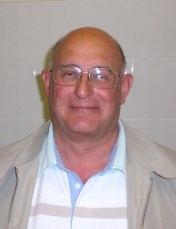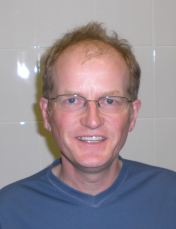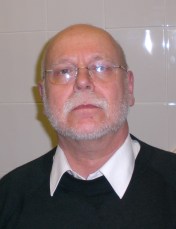| RSGB HF Affiliated Society Team Contests | ||||||
These are some of the most popular RSGB Contests in the calendar, supported by Radio Societies from all over the country. If you think that the Club Championship contests are fun, these events are likely to appeal to you. Main Rule Changes in 2016 Addition of 7 MHz to 3.5 MHz CW AFS Extra bandwidth for 3.5 MHz SSB AFS |
||||||
|
||||||
| 1(a) Background | There are three HF AFS contests, these being on 3.5 MHz -7 MHz CW & SSB, and 1.8MHz SSB (Club Calls). You will note that the third of these takes place on 1.8MHz, and may think that Top Band is impossible because of space limitations. While a 1.8MHz dipole would be very desirable, much smaller antennas can easily be made to work, enabling you to make a useful contribution to your club's entry! | |||||
| 1(b) Training | Some societies use these contests as a way of encouraging new
licensees to operate under appropriate supervision. Those participating more competitively are
asked to be patient with newcomers, who may not be as experienced in contesting. In the 3.5 - 7 MHz CW AFS, everyone must reduce speed in the 'QRS Corrals', to give slower operators a chance to participate and develop their Morse skills. The 3.5 - 7 MHz CW AFS is normally activity-limited, so every effort should be made to encourage participation and to work as many stations as possible. |
|||||
| 1(c) Power limit | Be careful on 1.8MHz -- the legal power limit in the contest is 32W. The Contest Committee monitors the band for signals which appear to be unreasonably loud. | |||||
| 1(d) Frequency limits | All frequencies listed in these rules are suppressed carrier/indicated frequencies (“dial frequencies”). Further explanation is included in the General Rules / FAQs. | |||||
| 1(e) Now included: 7 MHz CW | The experiment which added 7 MHz to the SSB contest was judged a success, so the format has been extended to add 7 MHz to the CW contest. In addition, the 3.5 MHz SSB band has been extended to include the segment from 3650 to 3700 kHz (indicated frequencies 3650 to 3702 kHz). | |||||
| 1(f) Club Prefixes | On 1.8 MHz, societies are encouraged to use special club prefixes. It is advantageous to do so, because it attracts callers who can immediately recognise a high-value bonus. | |||||
| 1(g) Meeting place | The specification of a club's 'Normal (or Usual) Meeting-place' is now the requirement to define a club's 'Virtual Meeting Place'. | |||||
| 1(h) Club Calls Contest | Headings in section 4, relating only to the Club Calls Contest (1.8 MHz AFS) are shown in GREEN. | |||||
| 1(i) Definition | The term "UK&CD" in these rules refers to the "United Kingdom and Crown Dependencies". This means jurisdictions allocated prefixes G, GD, GI, GJ, GM, GU and GW. | |||||
|
||||||
| 2(a) AFS Super League | The scores of Affiliated Societies in these contests will contribute to the AFS Super League 2015-16 (3.5 - 7 MHz) and 2016-17 (1.8 MHz), together with scores from AFS contests on VHF. | |||||
| 2(b) General Rules | The RSGB General Rules apply to these contests. | |||||
| 2(c) Call Signs | Contest Call Signs (SCC) are not permitted in these contests, even for entrants who hold a valid NoV from OFCOM. | |||||
| 2(d) 3.5- 7 MHz CW | Date: | Sunday 10th January 2016 (the 2nd Sunday in January each year). | Time: | 1400 - 1800 UTC | ||
| Indicated Frequencies: | 3510-3560 kHz and 7000-7040 kHz. Entrants must reduce speed around 3555 kHz and 7035 kHz to accommodate slower CW operators. | |||||
| 2(e) 3.5 - 7 MHz SSB | Date: | 16th January 2016 (the Saturday following |
Time: | 1400 - 1800 UTC | ||
| Indicated Frequencies: | 3.5 MHz -- 3602-3775 kHz,
7 MHz -- 7062-7100 kHz & 7132-7200 kHz. The segment of indicated frequencies 3650-3702 kHz is not SSB contest preferred and must be avoided if frequencies are available in the segments above or below. |
|||||
| Band usage: | A station may be contacted once on each band. Only one signal may be transmitted at any one time. |
|||||
| SO2R / SO2V: | The SO2R/SO2V technique of making contacts on one band by "Running", that is soliciting contacts by whatever means (for example by calling CQ/Test/QRZ?), while listening for and contacting stations who are Running on the other band, is encouraged and permitted -- this is excellent for operator training. | |||||
| Bandwidth constraints mean that Running simultaneously or alternately on both bands is not permitted. A station Running on one band who then starts Running on the other band, on having made a first QSO by Running must not return to Running on the first band for at least 10 minutes. | ||||||
| 2(g) 1.8MHz SSB | Date: | Saturday 12th November 2016 (the 2nd Saturday in November each year). | Time: | 2000 - 2300 UTC. | ||
| Indicated Frequencies: | 1872-1990 kHz. These are suppressed carrier/dial frequencies | |||||
| 2(h) Exchange | RS(T) plus serial number - starting at 001 and incrementing by 1. For the 3.5 - 7 MHz CW & SSB AFS contests, serial numbers run consecutively irrespective of band. The Club Calls Contest (1.8MHz AFS) requires additional information -- see Section 4(c) | |||||
|
||||||
| 3(a) Affiliation | Any Society affiliated to the RSGB may take part, by entering one or more Teams of up to 4 stations. Teams will be designated (for example) Anytown Radio Society Team A, Anytown Radio Society B, and so on. The adjudication software will allocate the four highest scoring stations to 'Team A', the next highest scoring four stations to 'Team B', etc. | |||||
| 3(b) RSGB Membership | The operators of each station must be members of the Society they represent. Operators are not required to be members of the RSGB. | |||||
| 3(c) Virtual Meeting Place | Each Society must specify its Virtual Meeting Place (VMP) -- a reference point from which distances are measured, and which need not have any connection with the club's activities. Clubs must email the Postcode or 6-digit QTH locator of their VMP to afs.query@rsgbcc.org before the first relevant contest entry of each calendar year. Their VMP will be used for all HF and VHF AFS contests, and for clubs in the Local Category of the 3.5 MHz Club Championship, 3.5 MHz Sprint contests and International Sprint contests. The currently held address information can be verified during AFS log submission. | |||||
| 3(d) Distance rule | All stations representing a Society must be located within a radius of 80 km
of the Society's Virtual Meeting Place, and be within the UK&CD. Stations must state the Postcode or 6-digit QTH
locator of their location for the contest being entered when submitting their entry to the contest Robot. Societies that are unable to assemble a team that complies with the distance rule due to the remote location of members may apply to the Chair of the Contest Committee for a dispensation, with details of members and their locations. This must be done no later than the 1st October each year, the month when the AFS Super League contest series begins. |
|||||
| 3(e) Station representation | A station may represent only one Society or Branch. | |||||
| 3(f) Multi operator | All stations are regarded as being multi-operator even if operated by only one person. There is no separate single operator section/category. All stations are entitled to use the DX Cluster, Reverse Beacon Network (RBN) etc. if they so wish. | |||||
| 3(g) Clubs with Branches | Where a Society has Branches, e.g. RNARS, it may define a separate Virtual Meeting Place for each Branch, and the Team(s) entered by each Branch will be considered to be separate from those entered by other Branches, except in respect of affiliation. | |||||
| 3(h) QSOs -- fairness | Note: “cheerleading” -- making contacts principally with members of one’s own society or group that has a team or teams entering the contest, is not permitted. | |||||
|
||||||
| 4(a) Club prefixes | Societies participating on 1.8 MHz may if they wish put on the air a station using the callsign allocated by the licensing authority for its use. This station is known as the 'Club HQ Station', and it may also use the appropriate club prefix (GX, GC, GT, GN, GH, GS, GP, etc.) It is advantageous to do so, because callers can immediately recognise the higher scoring bonus. A Society may define only one Club HQ Station, even if it is allocated several club callsigns. | |||||
| 4(b) HQ Stations and Members | Other stations on 1.8 MHz representing the Society are designated 'Club Members'. Club HQ Stations and Club Members all contribute to Team scores, and must all comply with the location and distance requirements of Section 3(c). | |||||
| 4(c) Exchange requirements | The contest exchange on 1.8 MHz is: Report Serial Number 'Club HQ', 'Club Member' or 'No Club' Club Name (a 4-letter club abbreviation) | |||||
| 4(d) Name abbreviations | The Club Name in the exchange may optionally be sent in full, but must also be sent and logged as a four-letter abbreviation, given here. See also text format and CSV format. Societies not in this list must email the Contest Committee at least one week before the contest to obtain a code. Contacts with stations not entering the contest (or outside the UK&CD) are logged as 'No Club'. Stations contacted may use an abbreviation not in the list, but this abbreviation must be logged as received. | |||||
| 4(e) Scoring and bonuses | The scoring on 1.8 MHz is 3 points per contact, plus a bonus of 5 points for each contact with a Club Member, and 25 points for each contact with a Club HQ Station. The RSGB Headquarters Station (GB3HQ or other GB callsign) may be in operation during the contest -- its entry will be treated as a checklog. Contacts with this station are logged as 'Club HQ' with club abbreviation 'RSGB', and will score a 50 point bonus rather than 25 points. | |||||
| 4(f) Logging programs | Programs known to the Contest Committee which can log the Club Calls Contest (1.8 MHz AFS) and create a suitable Cabrillo file are SD by EI5DI, N1MM Contest Logging Software and SkookumLogger for Mac OS X. | |||||
|
||||||
| 5(a) 3.5 - 7 MHz CW&SSB | 10 points per valid contact. Scores will be normalised in each contest: Normalised Score for each band = (score achieved x 1000) divided by the band leader's score. The two Normalised Scores (3.5MHz and 7MHz) will be added to produce an overall score. | |||||
| 5(c) Online entries | Submit to http://www.rsgbcc.org/cgi-bin/hfenter.pl by the date specified in the RSGB General Rules. Logs must be uploaded individually, using the appropriate AFS Club Name chosen from the list on the contest entry robot. | |||||
| 5(d) QSO entry page | Optionally for 3.5 MHz - 7 MHz CW&SSB submit via the QSO entry web page http://www.rsgbcc.org/cgi-bin/hfcover.pl. Please note that the maximum number of QSOs the web entry system can accommodate is 200. A post-contest log entry may also be prepared using SD by EI5DI. | |||||
| 5(e) Cabrillo log formats | Example of 3.5 - 7 MHz AFS CW Contest log Example of 3.5 - 7 MHz AFS SSB Contest log Example of Club Calls Contest (1.8 MHz AFS) log | |||||
|
||||||
| 6(a) Score Tabulation | A table of entrants' individual results is published, together with a table of Society Team results. The highest scoring Team for each Society will have the results normalised and entered into the AFS Super League | |||||
| 6(b) 3.5 - 7 MHz CW awards | The Edgware Trophy to the leading Team and the
Marconi Trophy to the operator or operators of the leading individual station
representing a competing Affiliated Society. Certificates will be awarded to the operator or operators of the highest-scoring individual stations on each band representing a competing Affiliated Society. | |||||
| The Flight Refuelling ARS Trophy to the leading Team and the RSGB Lichfield Trophy
to the operator or operators of the leading individual station representing a competing Affiliated Society. Certificates will be awarded to the operator or operators of the highest-scoring individual stations on each band representing a competing Affiliated Society. | ||||||
| The David Hill, G4IQM, Memorial Trophy to the leading Team, and the Ariel Trophy to the operator or operators of the leading individual station representing a competing Affiliated Society | ||||||
|
||||||
| 3.5 - 7 MHz CW: Steve, G3UFY |

| |||||
| 3.5 - 7 MHz SSB: Mark, G4MEM | 
| |||||
| Club Calls 1.8MHz: Quin, G3WRR | 
| |||||
